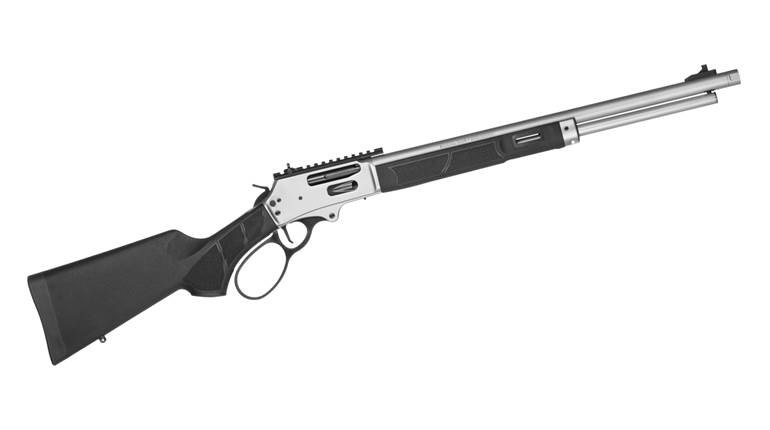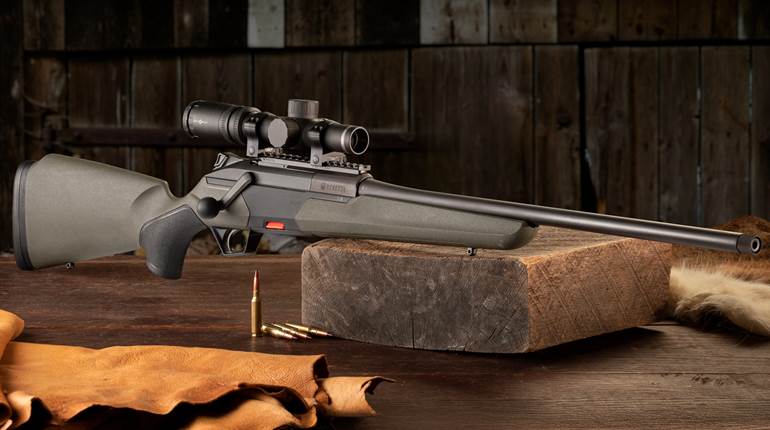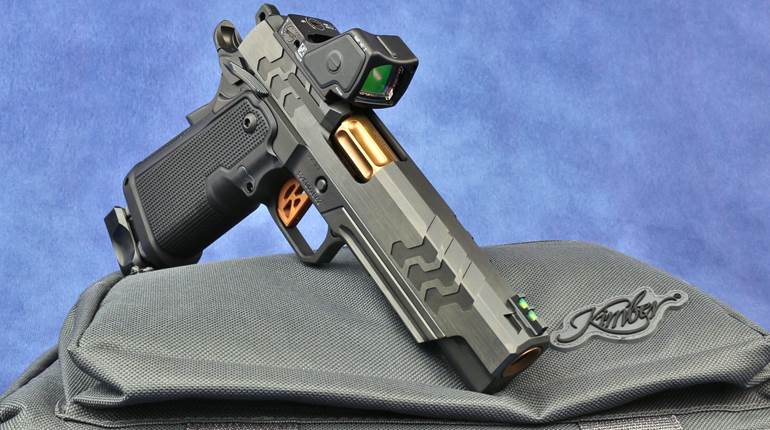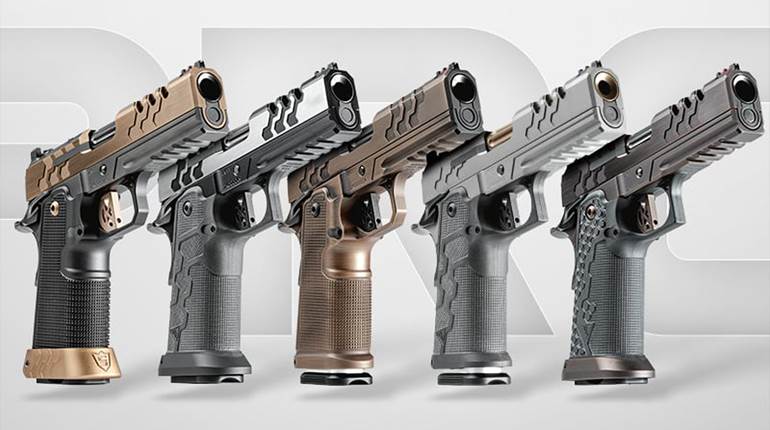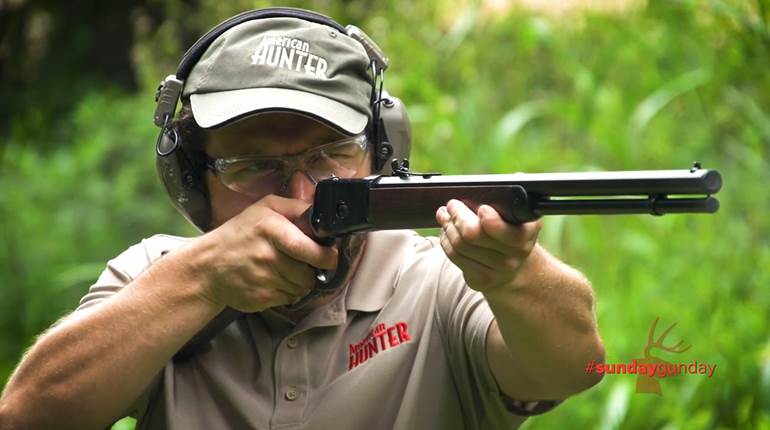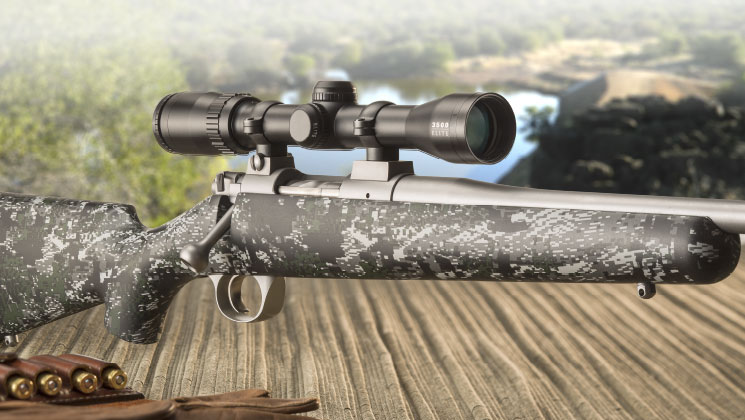
 Mountain hunting, as I grew up enjoying in Pennsylvania and still practice regularly there, differs considerably from the high-altitude pursuit most often associated with the term. Hunters up and down the East Coast, from North Carolina to Maine and farther inland from West Virginia to Tennessee, know exactly what I mean. Our domain is not the oxygen-deprived peaks of the Rockies, although we do sometimes climb a few thousand feet up slopes steep enough to leave us huffing when we reach the top. We have plenty of rocks, but rarely are the uppermost portions of our mountains only rocks; there is hemlock and hardwood along with an understory of laurel and saplings limiting the view. As such, we usually spot our game with the naked eye and shoot it suddenly at yardages measured with two digits instead of three.
Mountain hunting, as I grew up enjoying in Pennsylvania and still practice regularly there, differs considerably from the high-altitude pursuit most often associated with the term. Hunters up and down the East Coast, from North Carolina to Maine and farther inland from West Virginia to Tennessee, know exactly what I mean. Our domain is not the oxygen-deprived peaks of the Rockies, although we do sometimes climb a few thousand feet up slopes steep enough to leave us huffing when we reach the top. We have plenty of rocks, but rarely are the uppermost portions of our mountains only rocks; there is hemlock and hardwood along with an understory of laurel and saplings limiting the view. As such, we usually spot our game with the naked eye and shoot it suddenly at yardages measured with two digits instead of three.
But just as lightweight mountain rifles have found favor among western hunters who cruise the Absarokas and the Mackenzies, such arms have a place in the Alleghenies and the Great Smokies as well. This is the premise under which Kimber produces its Model 84M Adirondack; a trim, bolt-action center-fire named for a range of Upstate New York mountains and built especially for hunting in close, steep terrain.
The Adirondack was birthed from a sensible concept that has been largely overlooked, at least where marketing efforts are concerned. Past decades have given us specialized bolt-action rifles made for shooting across the bean fields of the Southeast, the senderos of Texas and, of course, the canyons of the West. The purpose of all has been to provide the rifleman with a tool capable of extending effective range, though oftentimes at the expense of portability and handling. Excepting the class of lithe mountain rifles, these center-fires—in many cases chambered for magnum cartridges—are long of barrel and heavy in hand. They do their job well in wide-open terrain, but there’s not much of that in the East.
Major manufacturers sometimes shorten the barrels of their flagship rifle models by a couple of inches to provide carbine versions better suited to stalking through the thick stuff, but besides a few notable exceptions, tailoring bolt guns for eastern hunting ends there. Kimber goes several steps further with the Adirondack. Having an 18" barrel and weighing just 4 lbs., 13 ozs. when chambered in .308 Win., the Adirondack is decidedly a woods rifle meant for hunting whitetail deer and black bear east of the Mississippi—or any place where timber and vegetation complicate the act of carrying a rifle, let alone taking a shot. It gives up some velocity, an excess of which isn’t needed at close-to-medium ranges anyway, in favor of maneuverability on par with classic lever-action carbines. With an overall length of 37.25", the Adirondack is the shortest rifle in Kimber’s lineup, and it’s also among the lightest. (There are other situations where the Adirondack’s dimensions give the hunter an advantage; more on them later.)
Kimber is perhaps the best-equipped production-rifle manufacturer to offer such a gun, already having two lightweight variants in its catalog. In fact, the Adirondack’s design is in many ways similar to the company’s Montana and Mountain Ascent rifles. All three take advantage of actions dimensionally scaled to their cartridges, thin barrels and feather-like stocks to make for easy carrying.
Kimber builds the Adirondack on the petite 84M receiver, which is sized for short-action cartridges. Fittingly, the rifle is available chambered in 7 mm-08 Rem. and .308 Win., as well as 6.5 mm Creedmoor and .300 Blackout. The latter two chamberings seem to be a nod toward the trendy, as one might expect to see .260 Rem. and perhaps even .338 Federal instead. Nevertheless, the two relative newcomers are hot right now, and chamberings alone often sell rifles. Kimber is smart to have bolt guns available in them, although the 6.5 mm Creedmoor is most beneficial at longer ranges, and the quick-handling Adirondack is certainly not designed for stretching shots.
The cylindrical 84M receiver is CNC-machined from stainless steel bar stock to dimensions just large enough for the .308 Win. family of cartridges. Having a length of 7.83", the receiver measures just 1.16" in diameter and houses a bolt that is 0.58" in diameter. The two-lug bolt has a Mauser-style claw extractor, which provides controlled-round feeding from the Adirondack’s four-round blind magazine.
Wide, spiral fluting on the bolt body and a hollowed-out bolt handle knob reduce some weight but are largely aesthetic; the Adirondack bolt weighs only 0.81 oz. less than that of the 84M Montana. That said, it is by removing fractions of an ounce here and there, as well as shortening the barrel, that Kimber is able to arrive at a rifle weighing less than the already light Montana.

No doubt the fluting on the bolt will turn heads, but it also introduces a minor issue. Like all 84M actions, the lugs on the Adirondack’s bolt ride twin opposing rails machined into the internal walls of the receiver. The interface reduces wobble and binding, and the bolts in the 84M Montana and 84M Classic rifles have been among the smoothest I’ve ever cycled. However, I can’t say the same of the Adirondack, and I’m convinced the fluting is to blame. The blade ejector, pinned to the bottom of the receiver’s left side slightly behind the ejection port, brushes the bolt body during cycling. A smooth bolt body, like in the Montana and Classic, presents an even surface for the ejector to slide against, and therefore contact between the two is unnoticeable when running the bolt. In the Adirondack though, the spring-loaded ejector moves up and down as it travels across the fluting, which makes the bolt cycle feel slightly bumpy. I admit this drawback is manifested more in perception than function, as the Adirondack fed and ejected rounds without fail during testing, but I still prefer a bolt that feels slick when it’s cycled.
Two things that haven’t changed from previous 84M rifles are a three-position, Winchester Model 70-style safety and a crisp trigger. Although Kimber specifies a trigger pull weight of 3 lbs., 8 ozs. to 4 lbs., the trigger on my test Adirondack broke at 4 lbs., 8 ozs. Since the trigger is adjustable this isn’t a big deal, and besides, I’d likely reduce even a 3-lb., 8-oz pull weight by a half pound or so. The important thing is that the trigger on the test rifle broke consistently with no creep.


The most distinguishing feature of the Adirondack is its stubby barrel, which is threaded at the muzzle to accept a brake or suppressor. Made of stainless steel and button-rifled, the barrel has the same light sporter contour as those found on the Montana and Mountain Ascent. It starts with a diameter of 1.05" just ahead of the recoil lug, tapers to 0.67" at its midpoint and, except for the one on the .300 Blackout version, measures 0.59" near the muzzle behind the thread. The .300 Blackout barrel flares near the muzzle to provide enough diameter for a 5/8x24 thread, the industry-standard pattern for .30-caliber barrels that permits direct attachment of thread-on suppressors. The other barrels have a 7/16x28 thread, which accepts a muzzle brake similar to the one Kimber provides on the Mountain Ascent or a 5/8x24 thread adaptor. Both are optional; the Adirondack comes with a thread cap.
More than any other feature, the Adirondack’s abbreviated barrel characterizes it as a “brush” gun. Measuring just 18" (16" on the .300 Blackout version), the barrel is 4" to 6" shorter than those found on other rifles in the Kimber 84M family. Anyone who has fought his way through rhododendron tangles or tried to cover a buck bounding through a 10-year-old clearcut recognizes the benefits of a short barrel. The odds of a barrel hanging up while plowing through the brush or it coming to a jarring stop against a sapling while swinging on a deer are inversely related to its length. Of course, the Adirondack’s shorter-than-average barrel means slower velocities, but the ranges at which most shots are taken in heavy undergrowth make this loss practically negligible. It’s a fair tradeoff, especially considering that the speed at which the bullet travels means nothing if the rifle snags and the bullet never leaves the bore.

The straight-comb stock has a 13.63" length of pull with the stretched pistol grip common to Kimber sporters. It offers aluminum pillars fore and aft of the action and glass bedding in the recoil lug area to enhance accuracy. Two screws secure the stock to the barreled action. Kimber suggests applying 65 in.-lbs. of torque to the screws, but I found the rifle can be tuned for improved accuracy by varying torque on each screw.

About the only thing missing from the Kimber Adirondack for close-range hunting in the brush and timber is a set of iron sights. For magnified optics, Kimber has partnered with Zeiss to offer a 2-10X 42 mm Conquest HD5 with a matching Optifade Forest camo finish. Considering the rifle’s $1,768 suggested price—nearly $300 less than that of the Mountain Ascent—the savings go a long way toward defraying the cost of a quality variable-power scope.
Keep it on 2X or 3X, though, so you’ll be ready when that dark-racked eight-point breaks from behind a blowdown and the Adirondack flies to your
shoulder.












